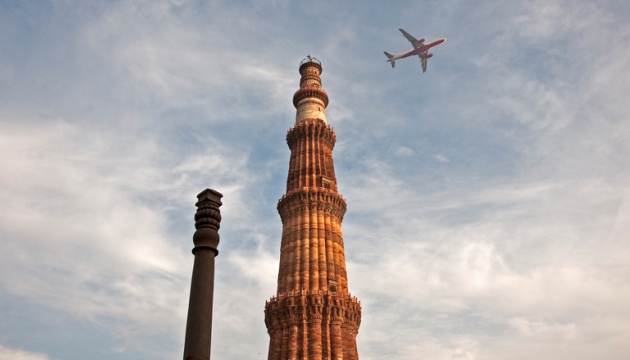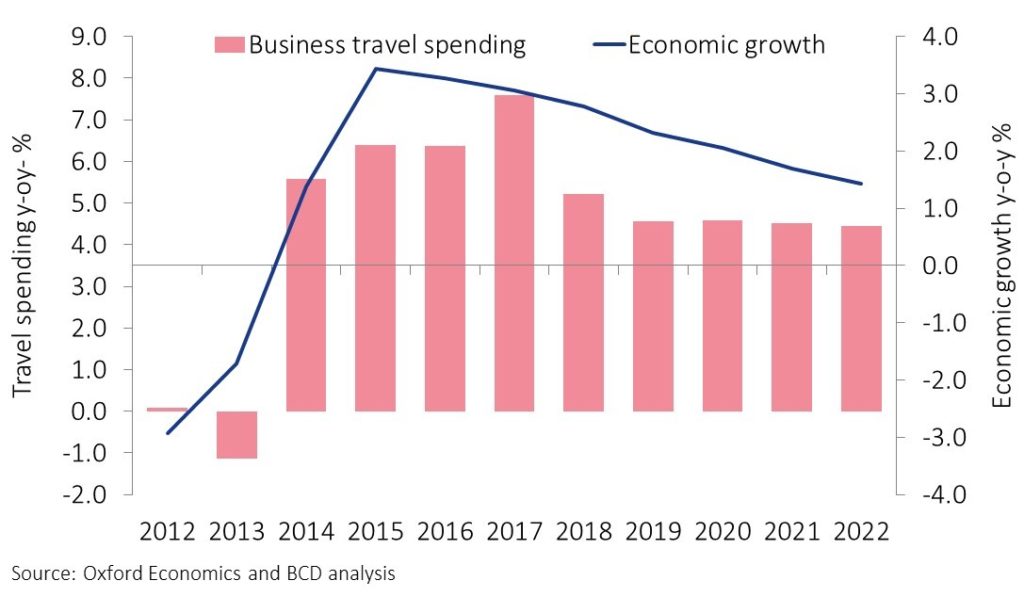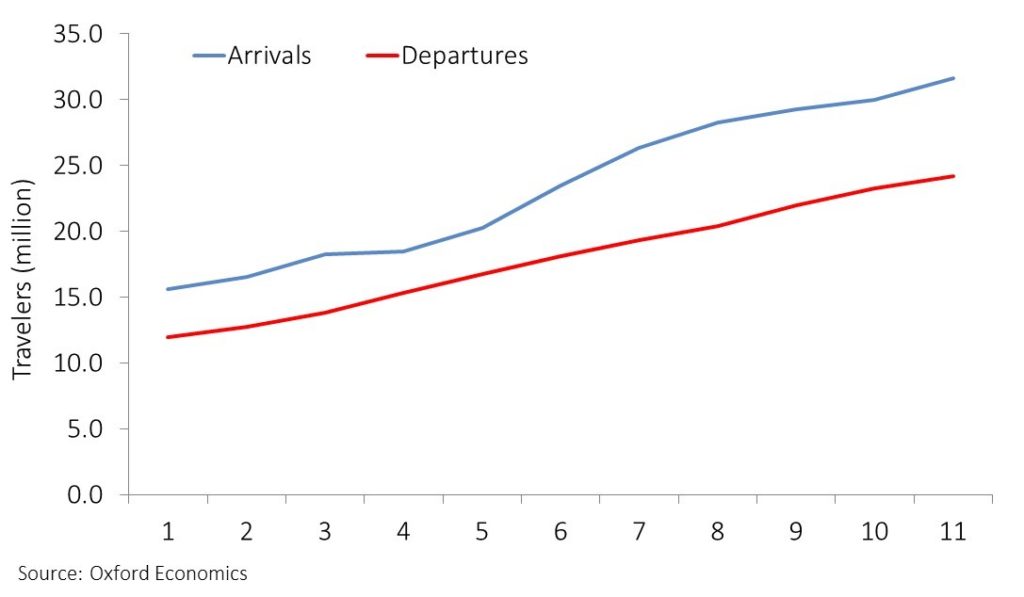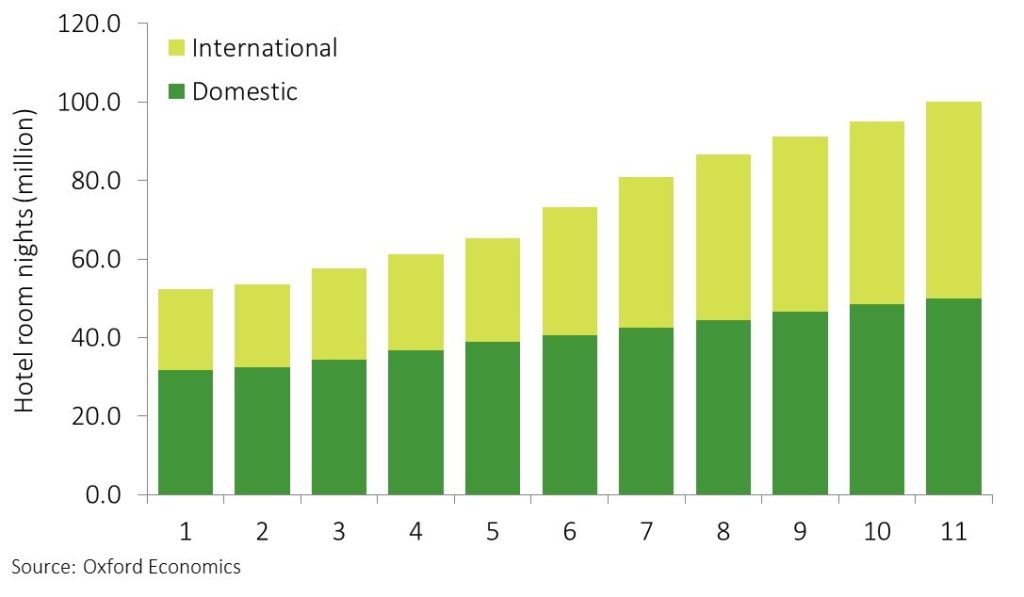
Business travel spending is projected to grow 10% a year through 2022.
India’s business travel market is worth more than US$23 billion (1.576 trillion Indian rupees), based in the most recent data from 2017. Outbound trips account for 43% of spending; domestic travel makes up 37%. Inbound international travelers account for a fifth of business travel spending. Between 2012 and 2017, spending in rupees increased 12% per year, on average. This fast growth is expected to continue—averaging more than 10% a year through 2022. Domestic travel spending should deliver the strongest growth at more than 13% annually, hitting 42% of business travel spending by 2022.
Economic environment
Economic growth and business travel spending
Click on image to enlarge
- A slowdown in the recovery of global trade, disruption to India’s manufacturing sector caused by demonetization and a new goods and services tax pulled back economic expansion in 2017. Growth was 6.2%, compared to 7.9% in 2016.
- 2018 brought a rebound with growth of 7.6% year-over-year from January through June. Despite the drag caused by higher oil prices and escalating global trade tensions, expansion should average 7.5% for the year.
- A general election in 2019 could lead government officials to divert public funds from more economically beneficial projects to ones with broad voter appeal.
- Economic growth is likely to slip back to 7% in 2019 and may head toward 6% by 2022.
Air
International travel
Click on image to enlarge
- International travel expanded on average by 8.5% per year between 2012 and 2017, with arrivals and departures growing at the same pace. Arrivals accounted for 56% of the 41.5 million international trips made in 2017.
- India’s rising middle class, infrastructure investment and tourism-friendly visa policies should drive a 6% annual increase in international trips through 2022.
- In 2017, Bangladesh and the U.S. were India’s largest inbound travel markets; each accounting for 16% of overnight visitors.
- With a 14% share of overseas trips, the United Arab Emirates is the most popular destination for Indian travelers, followed by Bahrain (9%) and Thailand (8%). By 2022, Saudi Arabia and the U.S. are expected to emerge as top destinations.
- Low-cost carriers dominate the domestic market. Together, market leader IndiGo, GoAir, SpiceJet and AirAsia India have 68% of the market, and this continues to grow, according to data from India’s Directorate General of Civil Aviation.
- The Ude Desh Ka Aam Nagrik, or Regional Connectivity Scheme, has significantly improved air access to smaller cities; made flying more affordable; and promoted the launch of startups, including Air Deccan and Air Odisha.
- A relaxation of air rules means AirAsia India, GoAir and Vistara should be able to start flying overseas by the end of 2018.
Accomodation
Hotel demand
Click on image to enlarge
- Between 2012 and 2017, hotel demand in India increased 40% to more than 73 million room nights. Over this period international traveler room nights soared 57%, and domestic demand rose 28%.
- By 2022, growth is expected to reach 9% annually. International travelers eventually will account for half of hotel demand.
- With 125 hotels, Tata Group’s Indian Hotels Company Ltd., is India’s largest chain. It’s best known for luxury Taj hotels, but India’s growing middle class, rising income levels and spending patterns have convinced IHCL to expand its “lean luxury” Ginger Hotels brand.
- IHCL faces growing competition from Marriott, which has this year overtaken both Radisson and Louvre Hotels to leap into second place in the market.
- Louvre Hotels, the fourth-largest player, includes 59 properties from Indian chain Sarovar in its portfolio of 83 hotels. Other notable homegrown chains include ITC Hotels, Concept Hospitality, Lemon Tree and Royal Orchid Hotels.
- Traditional Indian hotels targeting lower-service tiers face increased competition from OYO, which has launched premium corporate properties under the Edition O, Capital O and SilverKey brands.




